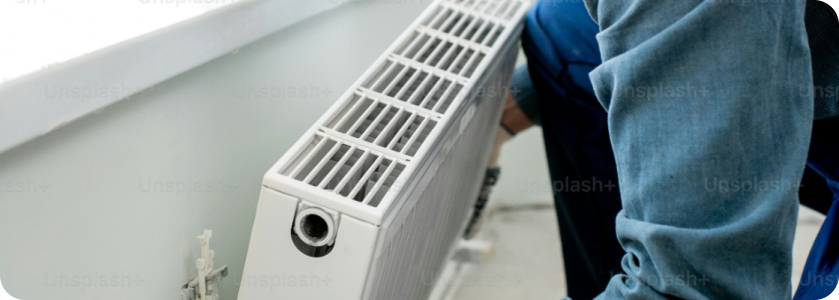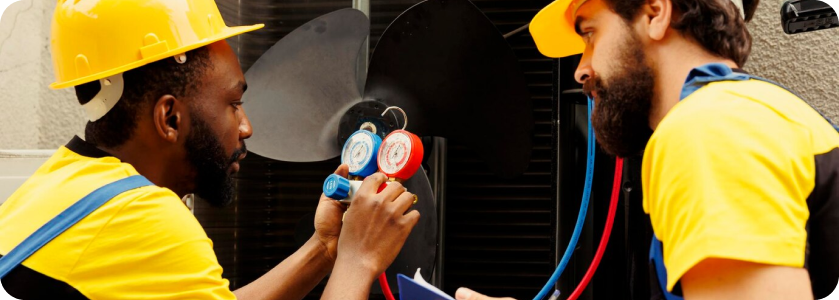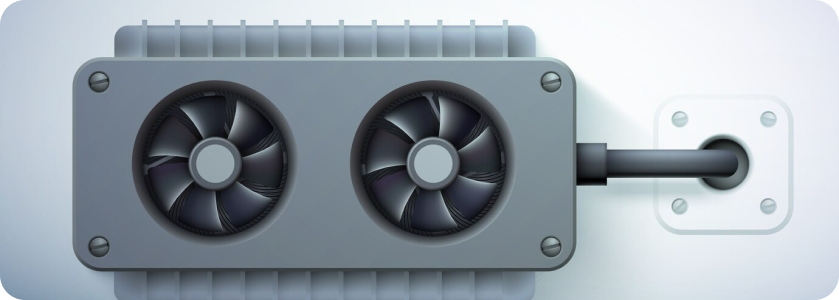hOW LONG SHOULD A FURNACE IN ONTARIO: 7 Contributing Factors
Response: A furnace generally should last you anywhere between 12-20 years depending on the average climate severity & usage, frequency of maintenance, brand & model and installation quality.
As stated above, there are numerous factors that contribute to the lifespan of a furnace system. After all, purchasing a furnace is an investment and there are various ways to protect that investment. Below we will discuss what factors contribute to the overall lifespan of a furnace.
Factor 1: Brand & Model of Furnace
The brand and model of a furnace are directly responsible for its lifespan. Why? Reputable brands incorporate higher quality materials and overall build, resulting in longer-lasting units. Choosing a reputable brand known for quality systems and strong warranties ensures efficient heating and peace of mind. Here are some reasons why you should choose a superior furnace brand and model:
- Brand: Reputable brands often offer higher-quality parts and construction.
- Model: Certain models may be built for longevity, featuring advanced heat exchangers and longer lasting materials such as stainless steel and cast iron.
- Reputation: Brand reputation impacts access to replacement parts and technical support, crucial for maintenance and repairs.

Factor 2: Usage Patterns of Furnace
Residential furnace usage varies widely as a result of individual usage variation from home to home. Here are some common factors that can contribute to higher usage:
- homes with larger families
- families with individuals that work from home
- colder outdoor temperatures
- home square footage and layout
- thermostat quality & settings
On the other hand, in milder climates or smaller households, furnaces may naturally see less frequent usage patterns. Monitoring usage habits and adjusting thermostat settings and maintenance schedules accordingly can help prolong a furnaces lifespan.

Factor 3: Thermostat Type and Features
Thermostats act as the brain of your furnace controlling not only the indoor temperature but its overall performance. Basic thermostats may be cheaper to purchase but they come with costly drawbacks such as being unable to learn your habits and turn on energy efficiency mode automatically when occupants leave the household.
Smart thermostats such as NEST and EcoBee include adaptive learning, where the thermostat adjusts heating schedules based on occupancy patterns, also using sensors to detect when the home is being occupied or not. By directly influencing a furnace to perform more efficiently, smart thermostats not only lower utility bills but also help a furnace to work less prolonging its lifespan. In addition, there are government rebates that you can apply for directly through the Enbridge website, making them potential even cheaper than basic thermostats. Here are some brands to consider:
NEST Thermostats
EcoBee Thermostats
Honeywell Thermostats
Lennox Thermostats

Factor 4: Severity of Winters
HRV and ERV systems operate on the principle of exchanging stale indoor air with fresh outdoor air, but they do so with crucial differences in their mechanisms.
HRVs are ideal for cold climates where there are excess relative humidity levels. Conversely, ERVs are best in hot and humid environments, offering energy value and high moisture control

Factor 5: Maintenance
Regular maintenance is essential to keep your furnace clean and problem-free. This includes two key aspects:
Frequency of Filter Changes:
Regularly changing the furnace filters is crucial for preventing dust and debris build up within your furnace. In addition, clogged filters restrict proper airflow, forcing the furnace to work harder which can ultimately lead to a shorter lifespan and system failures. Depending on the quality of filter and individual usage, filters should typically be replaced every 1 to 3 months. Tip: Smart thermostats can alert you as to when your filters need to be replaced.
Frequency of Cleaning:
Preventing dust and debris build up within your furnace’s internal components such as the blower motor, heat exchanger and ductwork can contribute to a longer lasting furnace. Investing in routine cleaning pays for itself. How? Over time, dirt and debris can hinder airflow, reduce efficiency, and increase wear and tear on the system. Getting an annual cleaning can prevent these costly issues.

Factor 6: Proper Installation
The quality of installation can directly affect how your furnace performs. A properly installed furnace is crucial for safety, operation and energy efficiency. Key considerations for proper installation include:
- Sizing: Installing an undersized furnace may cost less initially but ultimately end up costing more as a result of overworking itself and short cycling. Ensuring the furnace is correctly sized for the amount of space it is intended to heat is crucial.
- Ductwork: Proper installation and sealing of ductwork is important for efficient airflow and even distribution of heat throughout the building. Well-designed ductwork minimizes heat loss ensuring consistent temperature within every room.
Investing in professional installation by licensed and qualified HVAC technicians adhering to industry standards and manufacturer guidelines is essential to maximize the overall output and lifespan of the furnace.

Factor 7: Air Quality & Indoor Humidity Levels
Humidity affects how the body perceives indoor temperatures. Optimal humidity levels can allow you to set a lower temperature in the home leading to less wear and tear. In addition, maintaining optimal air quality can prevent pollutants and airborne particles from corroding expensive furnace parts. Consider the following:
- Air Filtration: You can prevent particle accumulation in your furnace by installing high-quality air filters designed to remove dust, allergens, and other airborne particles.
- Humidity Control: As discussed above, proper humidity levels allow you to set a lower indoor temperature and help prevent corrosion of furnace components and ensure comfortable indoor environments.
- Ventilation: Proper ventilation ensures sufficient airflow throughout the home, preventing stale air from sitting around and reducing the workload on the furnace.
- Duct Cleaning: Routine maintenance, including cleaning ducts and inspecting ventilation systems, helps prevent dust and debris from accumulating in your furnace.

How long should you keep your furnace for?
If your furnace is giving your problems with a lapsed warranty, consuming too much energy or not producing enough heat for your home, it may be time to get it replaced. Here are a few scenarios where it would make sense to replace your furnace:
Expensive Gas Bills: If your gas bills are expensive you may want to consider replacing your furnace. For example, spending an extra $50 per month over 3 years equates to $1800 lost which could have been put towards your new unit. If your furnace is already old in this scenario, a replacement would make sense.
Costly Problems: If you have an existing warranty that can cover existing problems, then there is no reason to replace it. In the event that your warranty is lapsed, costly fixes can range between $200-$1500 out of pocket with no guarantee that future problems won’t persist. If the cost to get your furnace fixed is in the latter part of that range, a furnace replacement would be the more secure option.
If your existing furnace is causing one or more of the above issues, don’t hesitate to get in touch with HVAC Estimates. Our team will do a thorough assessment to help you calculate and compare whether it is worth keeping or upgrading your unit.

